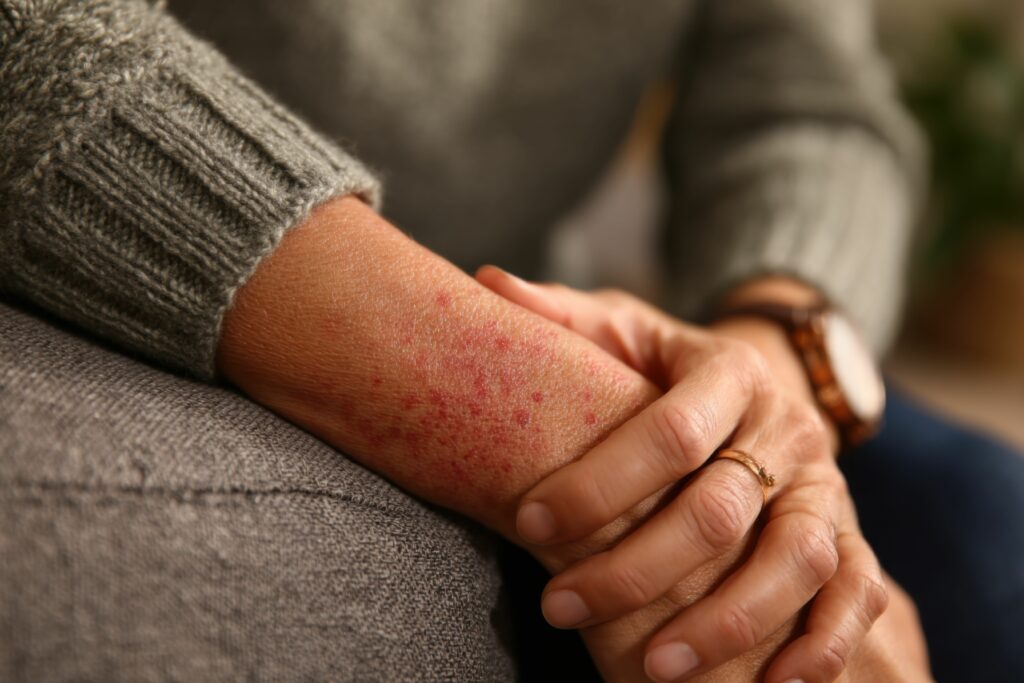When it comes to making healthier choices, we often think about food, fitness, or even the air we breathe. But one essential factor we tend to overlook is the fabric we wear. From clothing to bedding, the textiles we interact with every day can have a big impact on our health. Enter biocompatible fabrics — a growing movement in both fashion and wellness that’s all about safety, comfort, and sustainability.
In this guide, we’ll break down what biocompatible fabrics are, how they benefit your skin, and why they might be the missing piece in your wellness routine.
What Are Biocompatible Fabrics (And Why Should You Care)?
Biocompatibility means that a material can interact with the human body without causing irritation, allergic reactions, or other adverse effects. In the world of fabrics, this means choosing textiles that are gentle on the skin, non-toxic, and often hypoallergenic.
These materials are used extensively in medical devices, but they’re also making waves in the consumer world—especially for people with sensitive skin, allergies, or chemical sensitivities. Whether you’re wearing them, sleeping on them, or wrapping your baby in them, biocompatible fabrics offer a safer, more conscious option.
Everyday Applications: Beyond the Operating Room
While hospitals and healthcare devices have long relied on biocompatible materials, the same safety principles are now being embraced in:
- Everyday clothing
- Baby apparel and blankets
- Underwear and socks
- Bedsheets and pillowcases
- Fitness and athleisure wear
Natural materials like organic cotton, hemp, and bamboo are leading the charge. These fabrics are grown without harsh chemicals and processed with minimal treatments, making them ideal for people who want to reduce exposure to toxins.

Top Benefits of Biocompatible Fabrics
✔ Hypoallergenic Comfort
They’re a dream for people with eczema, psoriasis, or contact dermatitis. No itching, no rashes, no inflammation.
✔ Breathability and Temperature Regulation
Moisture-wicking properties keep you dry and prevent bacterial build-up, helping to avoid odor and infection.
✔ Safer for Babies and Sensitive Skin
Babies have delicate skin and developing immune systems, making biocompatible fabrics an ideal choice for infant wear and bedding.
✔ Eco-Friendly & Sustainable
Many biocompatible materials come from renewable sources and break down naturally, contributing to a lower environmental footprint.
Choosing the Right Fabric: A Conscious Buyer’s Guide
When shopping for biocompatible textiles, look for:
- Certified organic cotton, hemp, or bamboo
- Low-impact dyes or natural dye alternatives
- Chemical-free processing (e.g., mechanical or enzymatic treatments)
- Labels like OEKO-TEX Standard 100, GOTS (Global Organic Textile Standard), or Bluesign® certified
Also consider supporting brands that prioritize transparency and sustainability in their supply chains.
Biocompatible Fabrics vs. Traditional Textiles
| Feature | Biocompatible Fabrics | Traditional Fabrics |
| Skin Reactions | Low to none | Higher risk of irritation |
| Chemical Exposure | Minimal | Often high |
| Sustainability | Often biodegradable | Typically synthetic |
| Comfort & Breathability | Excellent | Varies widely |

If you’ve ever suffered from unexplained skin rashes, discomfort, or overheating from synthetic fabrics, making the switch could be a game-changer.
Investing in Your Well-being (and the Planet)
Biocompatible fabrics don’t just protect your skin—they represent a shift toward more mindful living. By choosing materials that support both your health and the environment, you’re making an investment in long-term wellness.
Imagine a wardrobe that doesn’t make you itch, bedding that soothes you to sleep, and fitness gear that performs and protects. That’s the future biocompatible textiles are making possible.
Final Thoughts: Small Swaps, Big Difference
Making the switch to biocompatible fabrics might seem like a small lifestyle change, but the benefits can be lasting and significant. Whether you’re navigating sensitive skin, avoiding harsh chemicals, or simply striving to make more sustainable choices, biocompatible fabrics are a practical, comfortable step forward.

